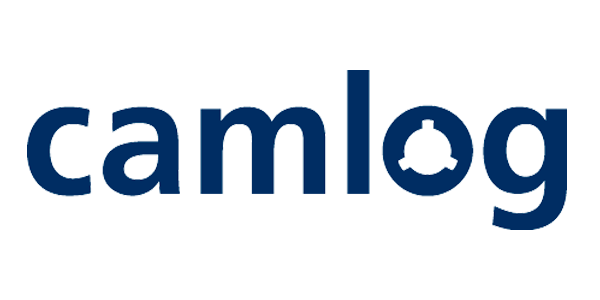What are veneers?
Dental veneers are thin, tooth-coloured shells that are attached to the front surface of your teeth to improve their appearance. They’re often made from porcelain or resin-composite materials and are permanently bonded to your teeth.
Veneers can be used to treat a number of different cosmetic concerns, including chipped, broken, discoloured, or smaller-than-average teeth.
Some people may only need 1 veneer in the case of a chipped or broken tooth. Veneers can be used to create an even, symmetrical smile in this case between 6-8 veneers may be needed.
Veneers aren’t the same as tooth implants or crowns. Veneers only cover the front surface of the tooth where as implants or crowns cover the whole tooth.
What are the different types of veneers?
There are 2 types of veneers; porcelain and composite.
Porcelain is the strongest material of the two and is less prone to chipping. This treatment requires more preparation of the tooth. The preparation of the tooth does include more grinding down of the tooth surface which is an irreversible procedure. This treatment may require local anesthetic as it can be sensitive.
Composite sits on top of your existing teeth, helping to shape the teeth into a more desirable appearance. Composite veneers are ideal for fixing small chips or cracks in the teeth, as you do not need to cover the entire tooth sometimes.
Composite is the material used for No-prep veneers. This treatment may require some tooth preparation or alteration, but these alterations are minimal. Instead of removing layers of tooth under the enamel, no-prep veneers only affect the enamel. In many cases, no-prep veneers don’t require local anesthetic.
What happens in the appointments?
Porcelain veneers
The first appointment will be a preparation appointment to get accurate sizing for your veneers. The dentist will trim down your tooth removing the enamel. Impressions will be taken using putty and a trios scan which will be sent to the lab to make the veneers. A shade will be agreed with the patient and dentist before sending to the lab to be made so that we can completely match your veneers to your existing teeth. Temporary veneers will be placed in the meantime.
The second appointment will be the fit appointment. At this appointment your dentist evaluates the fit, shape, and coloration of the veneers to make sure they’re perfect for you. Your dentist will thoroughly clean your teeth, this is important, as it keeps bacteria from being trapped under the veneer and causing decay. After they do this, they use the grinding tool to create a rougher texture on each tooth on which a veneer is to be applied. This makes it easier for the veneer to stick to the tooth.
Your dentist then uses dental cement to bind the veneer to the tooth. They’ll use ultraviolet light to harden this cement quickly, and once you leave the practice, your new smile is ready to go!
Composite veneers – no prep veneers can usually be applied in just one appointment. Great for those with smaller teeth, minor gaps, or discolouration, you can get your dream smile in a matter of hours. The best bit is that with this type of veneer, if you’re not happy with the results or feel like a change, the process can be reversed. This treatment does not require any massive changes to the natural teeth.
How to maintain and care for your veneers
Both composite bonding and porcelain veneers have similar maintenance involved. Firstly, you should always practice proper oral health by brushing twice daily with a dentist-approved toothpaste, flossing, and using mouthwash. You should also make sure to see your dentist for regular checkups and cleanings.
Secondly, try not to chew on anything hard, such as ice, pens, finger nails or boiled sweets. This can actually damage the veneers and cause them to crack in the very same way that it can damage your real teeth. Try to avoid using your teeth as tools for this reason. If playing contact sports, you must wear a mouth guard. Never use your teeth to open packaging or condiment packages.
Finally, address any ongoing issues that you may have that could damage the veneers, such as bruxism (teeth grinding). Bruxism can wear away the veneers over time and wear away the enamel on your natural teeth. If you grind or clench your teeth at night, get a splint or retainer to protect your veneers.
The recovery process doesn’t take an extended amount of time, once the veneers are cemented on and any anesthetic wears off, you can eat and chew as you normally would. While the anesthetic is wearing off, be conscious of not chewing on your cheeks or tongue.
Porcelain veneers typically last between 10 and 15 years, and no-prep veneers last around 5 to 7 years. Taking good care of your veneers and oral health can prolong the lifespan of your veneers.
COMPOSITE VENEERS VS PORCELAIN VENEERS
So, which one is best for you?
Composite veneers are a minimally invasive, quick, and easy way to get the smile you have always dreamed of. They are cost-effective and the process is reversible, so it may be a good option if you are younger and unsure about committing to porcelain veneers. They are also great for repairing chips or cracks in the teeth.
However, we would advise against getting composite veneers if you are a heavy smoker, as this can prematurely stain the composite and result in a patchy appearance on the teeth. It may also be ill-advised to get composites if you have a habit of nail biting. The habit can be quite hard to break and will increase the risk of your veneers chipping or cracking.
Porcelain veneers are great for those that would like a more permanent solution, as they last longer and are generally more durable and stain resistant. Porcelain can also look more natural. As porcelain is usually easier on the gum-line, we would recommend older patients to opt for this treatment.
On the other hand, porcelain veneers are not a good option for you if you aren’t sure you want to fully commit to them. As we mentioned, they cannot be removed and so they are more of a life-long investment.






